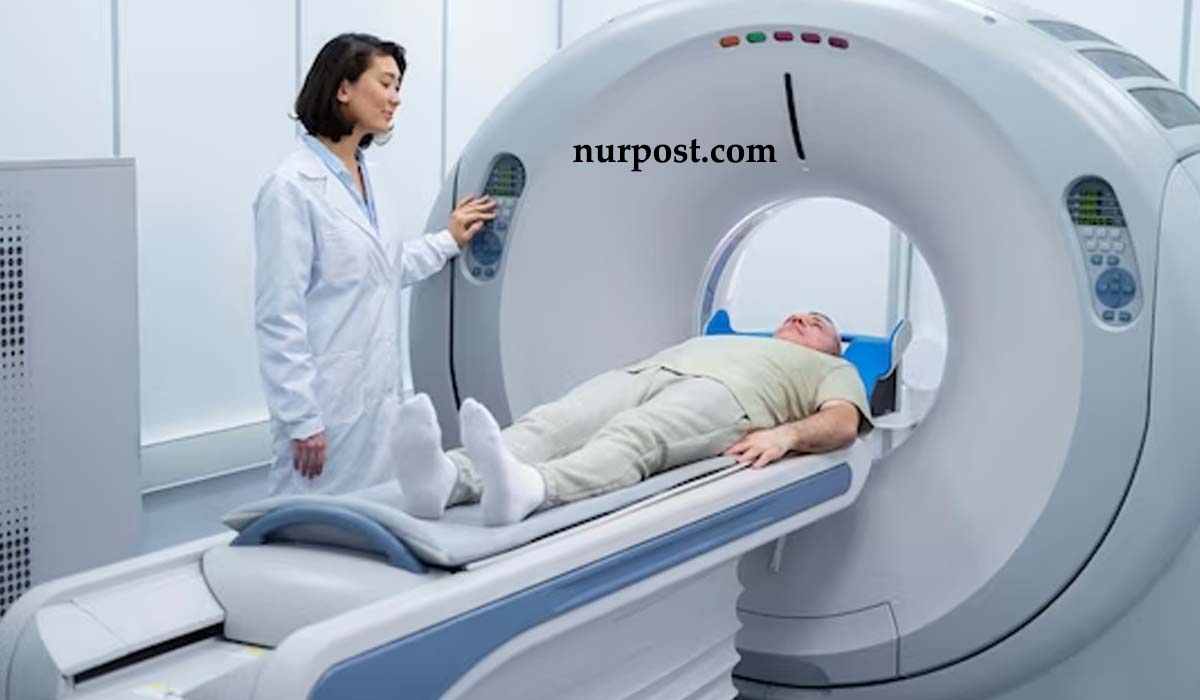Learning Potentials with The Power of Massive Education .Unlock Learning Potentials with The Power of Massive Education Embrace modern methods to move past traditional learning – increase your knowledge with ease. Discover the potential of High-Volume Education!
Unlock Learning Potentials with The Power of Massive Education Find the Best Result
The Power of Massive Learning: Unlocking High-Volume Education Potential
Education, never in the past so accessible in America and globally, has grown from a singular option into diverse coveted grand possibilities with widespread appeal. Massively Massive Learning (MML) was coined as certification and indelible credentialing among like-minded professionals are respected as viably deployable into general culture today.
The compounded power of having information robustly given to the world’s student population would offer undreamt immediate capabilities.
Defining MML
MML is defined as disseminating instruction, classes, and lectures to an audience of learners that number far greater than the traditional classroom. Like any educational model, MML depends heavily on two major components: the instructors and the students. In MML, the instructors would serve as facilitators, while the students would be remote participants in online learning.

In MML, group learning is used to game-ify the instruction process, with students competing and collaborating at the same time. The instructors would provide clear objectives and goals for the learners, as well as moderated forums in which learners can collaborate and engage in peer-to-peer learning.
Unlocking High Volume Education Potentials
MML technology creates an unprecedented opportunity to unlock the global potential and penetrate new international markets. It breaks the barriers of space and traditional classroom-style learning. The internet gives students the opportunity to study in any country whether it is at the beach in Thailand or in a café in Singapore.
MML not only provides students with global access to education, but it also enables educators to offer courses in languages ranging from Spanish to Chinese. Thus, language is no longer a barrier, and learning content can be quickly and easily distributed to students around the world. Through MML, global learners can access high-quality educational content from the comfort of their own home.
Benefits of MML
The advantages of MML include cost savings, reduction of physical space needed, and more accessibility to students around the globe.
Cost savings: Large scale course delivery results in a decrease in students’ cost, as well as the cost of running these courses. The goal of MML is to cut down on the costs of providing high-quality education, and this translates into reduced costs for students.
Reduction of physical space: With MML, the need for physical classroom space is reduced, making it more affordable to deliver courses online. MML offers an alternative to traditional classroom settings with the added advantages of large-scale digital access, which is especially attractive to those living in remote areas.
Accessibility: One of the major advantages of MML is its global reach and accessibility. With the internet, students around the world can access the same course content as those physically located in a university or physical classroom.
MML gives students the ability to learn on their own schedule and at their own pace, providing greater flexibility and customizability for individual learning objectives. Moreover, students benefit from the ability to network and collaborate in online class discussions.
Guides for Instructors Teaching Online
Instructing in MML requires a broader set of skills in order to effectively connect with the learners. Here are a few guidelines and tips to ensure that the classroom experience is successful.
Know your audience: Understanding your students’ backgrounds, interests, and experiences will help you develop lessons and content that can engage and motivate them. Try to create content that reflects their needs and allows them to practice their skills in an environment tailored to their particular interests and goals.
Engage your students: MML allows for more personal engagement from instructors. Get to know your students by asking questions and listening intently to their answers. Demonstrate your interest in their learning by connecting with them individually and gifting them with time during the sessions.
Build connections: Create a safe, supportive environment in which students can thrive by building strong relationships and fostering a sense of community. Encourage collaboration and class participation by providing meaningful interactions and meaningful feedback.
Provide personalized attention: Allow for extra time in class for individual student questions or concerns. Personalized attention helps increase engagement and enhances learning.
Use technology to your advantage: Technology can add a lot of value to online teaching with video conferencing, webinars, chat rooms, and other online tools. Make use of the technology to keep students engaged and connected, while still tailoring it to the specific needs of your students.
Make learning fun: People learn best when they’re having fun. Use games and activities to engage learners and keep them interested. This will also help break up long classes and monotony.
Establish expectations: Establish expectations and guidelines from the outset so that students know what to expect during the course. These expectations should include timeliness, engagement, and collaboration.
Be intentional: Create thoughtful lessons that are focused and organized. This will help students understand what needs to be done and give them the tools they need to succeed.
Evaluate student progress: Regularly evaluate student progress and adjust course content accordingly. This will help to ensure that goals are being met and that students are on track.
Create a learning environment: The optimal learning environment is one in which students believe they can learn and comprehend topics, as well as feel comfortable and safe. Set weekly goals and have students assess their own knowledge and progress throughout the course.
Create trust: Trust is essential for a successful learning experience. It’s up to the instructor to set expectations and foster an environment of respect and understanding.
Be available: Make yourself available to your students both during and outside of class time. This will allow you to get to know your students better and provide them with a more personalized learning experience.
Takeaways
Massively Massive Learning (MML) has immense potential to drastically reduce the cost of delivering high-quality educational content and reach more students around the world. It also provides instructors with an alternate modality for connecting to learners, with platforms to collaborate and engage in peer-to-peer learning.
In order to be successful in the MML space, instructors need to know their audience, be able to engage their students, build strong relationships, provide personalized attention, use technology to their advantage, make learning fun, and create a trusting learning environment. With these guidelines in mind, instructors should be able to create an optimal learning experience for their students.
Unlock Learning Potentials with The Power of Massive Education Best Solution For You
Unleashing the Learning Potential: Unlocking the Power of Knowledge
Your Video is here .
Unlock Learning Potentials with The Power of Massive Education
What is The Power of Massive Learning?
Massive Learning (ML) is an approach to education and training, which can involve hundreds or thousands of people simultaneously accessing educational materials through e-learning platforms. ML techniques are designed to provide learners with numerous opportunities to engage with learning materials, providing an immersive and engaging educational experience.
ML is used to increase access to education, particularly to learners that may not be able to access traditional classes. It enables learners to access learning materials in real-time, giving them greater control over their learning journey. By utilizing e-learning platforms to manage the overall learning experience, Massive Learning can significantly reduce the time and cost associated with learning.
Unlocking High-Volume Education Potential
Massive Learning has the potential to revolutionize education. By providing engaging and interactive learning experiences it can dramatically expand access to education and dramatically reduce cost. With Massive Learning, hundreds or thousands of learners can access the same learning materials at the same time, all for the cost of a single teacher.
Massive Learning also significantly reduces the time it takes for learners to acquire knowledge and skills. With effective use of multimedia content and real-time feedback, learners can quickly and easily acquire the knowledge they need. Instead of spending hours in the classroom, learners can access educational materials within minutes or hours.
ML is also highly effective in helping learners develop a deeper understanding of the subject matter. By providing learners with multiple opportunities to engage with educational materials in a self-directed way, they can develop a level of mastery not possible in a traditional classroom setting.
ML Platforms and Technologies
The use of Massive Learning requires a platform or technology that can enable learners to access learning materials in real-time. There are a number of different platforms and technologies available for use in ML, ranging from basic e-learning platforms to more sophisticated content delivery systems.
At the most basic level, e-learning platforms can provide learners with access to educational materials, as well as interactive activities and assessments. More advanced content delivery systems, such as virtual reality and augmented reality, can further enhance the learning experience by providing an immersive and engaging environment for learners.
Integrating Facilitated Learning
While Massive Learning emphasizes self-directed learning, it can also be integrated with facilitated learning, such as group discussions and small group learning. By using a combination of self-directed learning and facilitated learning, learners can acquire the subject matter more deeply and more quickly than if they only used one method. Facilitated learning also allows learners to gain insight into the subject matter from their peers, providing further opportunities for learning.
Personalized Learning Experiences
Massive Learning can be used to create highly personalized and engaging learning experiences. By offering content in a variety of formats, such as text, images, videos, interactive activities, and assessments, learners can create their own learning path and move through the educational material at their own pace.
In addition, each learner can customize their learning environment according to their own preferences. They can choose which topics to focus on, how to access the educational material, and how much time to spend in the learning environment. This level of personalization can significantly increase the effectiveness of learning and lead to better learning outcomes.
Data-Driven Learning
Massive Learning also provides opportunities for data-driven learning. With Massive Learning, learners can interact with the learning materials and submit feedback, which can be used to continually refine the content and learning experiences. The data collected through Massive Learning can be used to understand how learners interact with the educational material, identify weaknesses in the content, customize the learning experience for each learner, and measure learning progress over time.

Scalability
One of the key advantages of Massive Learning is its scalability. With Massive Learning, educational institutions can quickly and easily expand their educational offerings to meet the needs of a growing student body without having to invest in additional resources. The same Massive Learning platform can be used to provide educational materials to hundreds or thousands of students simultaneously.
Accessibility
Massive Learning can also be used to expand access to education for individuals who may not be able to access traditional education. By providing widely available, cost-effective educational materials, Massive Learning can help to make education more accessible to everyone. From individuals in rural areas to learners with physical disabilities, Massive Learning can make it easier to access educational materials.
Seamless Experience
Massive Learning enables learners to access educational materials seamlessly, without having to leave the comfort of their own home. With Massive Learning, learners can access learning materials and interact with instructors and peers in a safe and secure online environment. This enables them to focus on the learning experience without worrying about their physical environment.
Conclusion
Massive Learning is a powerful educational tool that has the potential to revolutionize education and training. By expanding access to learning materials and providing learners with immersive, engaging learning experiences, Massive Learning can increase the effectiveness of learning and lead to better learning outcomes. Moreover, Massive Learning can be used to help individuals access educational materials in an affordable and convenient manner, regardless of where they are located. Finally, Massive Learning can also be used to collect data and insights into learning, which can be used to continually refine and improve the learning experience.
Unlock Learning Potentials with The Power of Massive Education


.
What is massive learning?
Massive learning refers to the delivery of large enrollment online or distance learning courses at scale, with a focus on increasing access to high-quality education and training. It seeks to capitalize on new technology such as artificial intelligence and virtual reality to provide learners with engaging, personalized and cost-effective learning experiences.
How can massive learning be used in education?
Massive learning can be used in education to provide more people with access to quality courses and qualifications, promote personalized learning experiences, and enable learning in interactive virtual environments. Its potential applications include delivering online language courses, providing digital training and assessment programmes, and offering large-scale online courses such as MOOCs (Massive Open Online Courses).
What are the benefits of massive learning?
The benefits of massive learning include increased access to high-quality education and training, improved efficiency in the delivery of courses, and greater flexibility and Customization options for learners. It also enables universities to expand their reach and provide more people with access to accredited qualifications, and provides employers with a cost-effective way of training their staff.
What is the potential of massive learning?
The potential of massive learning is exciting. It has the power to redefine how learning is delivered, and can provide greater access to quality education across all levels. It also has the potential to create a more equitable education system, and to unlock the potential for widespread transformation of people’s lives through education.
What challenges does massive learning pose?
Massive learning poses several challenges. These include issues of scalability and ensuring quality assurance and control over such large courses, as well as security concerns. Furthermore, due to the sheer size and scope of courses, it can be difficult to keep learners engaged and provide the level of personalized support they may require.
What are the risks of massive learning?
Massive learning can present some risks, such as unsustainable costs, data security threats, and a lack of quality assurance across courses. It can also lead to an increased reliance on automation and reduced contact with lecturers, potentially undermining the quality of learning.
What is the future of massive learning?
The future of massive learning is exciting. It has the potential to revolutionize education, and to enable seamless access to educational opportunities for people around the globe. With improved technology and increased demand for quality, personalized, and cost-effective learning experiences, the future looks very promising for massive learning.
What techniques can be used to ensure quality in massive learning?
A number of techniques can be used to ensure quality in massive learning, such as implementing structured teaching plans and course assessment strategies, ensuring course material is regularly reviewed and updated, utilizing peer-review, and offering a range of quality resources and support for learners. Furthermore, artificial intelligence and virtual reality can now be used to personalize the learning experience for each student.
What technologies are used to facilitate massive learning?
A range of technologies are used to facilitate massive learning, such as cloud-based systems, artificial intelligence, virtual reality, video streaming, and interactive multimedia. These technologies can be used to create immersive, engaging learning experiences, as well as offering automated grading and feedback.
Are there any specific regulations for massive learning?
Yes, there are specific regulations for massive learning in some countries. For example, in the US, technology-enabled distance learning courses are subject to the Higher Education Accountability Standards. These regulations set out a number of expectations around the quality of the learning materials, the assessment process, and the support available to learners.
What skills are required for massive learning?
There are a number of skills required for successful massive learning, such as the ability to develop and deliver engaging content, use learning management systems, evaluate course materials, and work with a variety of technological tools. Additionally, instructors need to be comfortable with the pedagogical principles of distance learning, and be able to communicate effectively with a large group of students online.
What is the impact of massive learning?
The impact of massive learning is potentially huge. Due to its ability to provide cost-effective, quality learning experiences at scale, it has the potential to revolutionize the way we deliver education and training, and to create a more equitable learning environment. It can also provide employers with a more effective way of upskilling their workforce.
